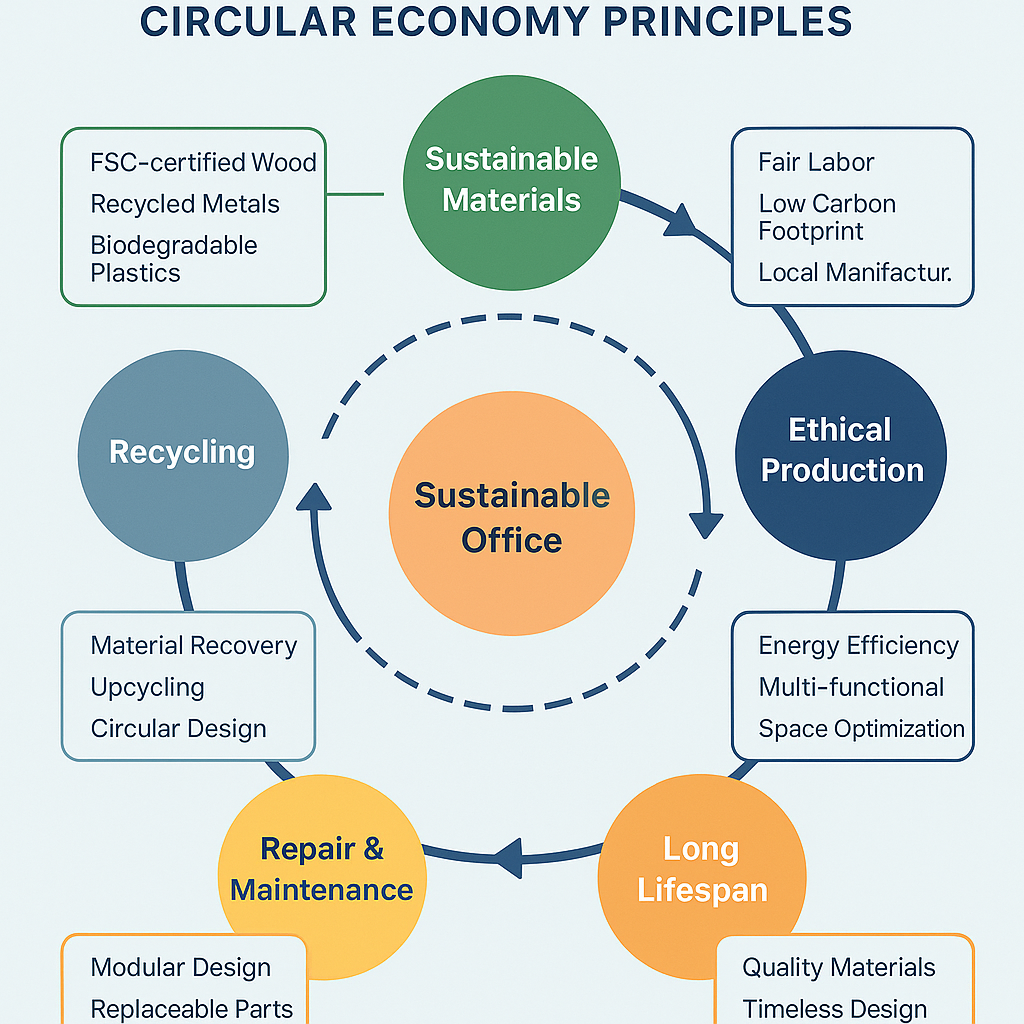The Sustainable Workspace Movement
As environmental concerns continue to shape business decisions, the concept of the sustainable workspace has evolved from a niche interest to a mainstream priority. Swedish businesses have been at the forefront of this movement, combining their cultural heritage of environmental stewardship with innovative design solutions.
Sustainable office organization goes beyond simply recycling paper and using energy-efficient lighting. It encompasses a holistic approach to creating workspaces that minimize environmental impact while maximizing functionality, wellbeing, and productivity.
Key Components of Sustainable Office Organization
1. Eco-Friendly Materials
The materials used in office organization products significantly impact their environmental footprint. Sustainable options include:
- FSC-certified wood: Sourced from responsibly managed forests
- Recycled metals: Particularly aluminum and steel, which can be recycled indefinitely
- Bio-based plastics: Derived from renewable resources like corn or sugarcane
- Reclaimed materials: Giving new life to materials that would otherwise be discarded
- Natural fibers: Including wool, cotton, and hemp for textiles
At OrdningKontor, our commitment to sustainability begins with material selection. Our signature desk organizers, for example, use Swedish birch from FSC-certified forests, and our metal components contain a minimum of 80% recycled content.
2. Circular Design Principles
Circular design aims to eliminate waste by creating products that can be reused, repaired, refurbished, or recycled. This approach includes:
- Modular components: Allowing for easy replacement of parts rather than entire products
- Design for disassembly: Making it simple to separate different materials at end-of-life
- Durability: Creating products that stand the test of time
- Versatility: Designing items that can adapt to changing needs

Swedish design has long embraced these principles, focusing on quality craftsmanship that creates lasting products. The "buy once, buy well" philosophy reduces consumption and waste over time.
3. Energy and Resource Efficiency
Sustainable office organization considers the entire lifecycle of products, including their production and use:
- Low-impact manufacturing: Processes that minimize energy use, water consumption, and emissions
- Efficient packaging: Minimal, recyclable packaging that reduces transportation emissions
- Energy-conscious products: Items that help reduce workplace energy consumption
4. Healthy Material Choices
Sustainability extends to human health as well as environmental health. This includes:
- VOC-free finishes: Avoiding volatile organic compounds that affect indoor air quality
- Non-toxic materials: Eliminating harmful chemicals and substances
- Allergy-conscious choices: Considering materials that don't trigger allergic reactions
Implementing Sustainable Organization in Your Office
Conduct a Sustainability Audit
Before making changes, assess your current situation:
- Identify items that could be replaced with more sustainable alternatives
- Look for inefficiencies in space utilization
- Evaluate current waste management practices
- Consider the lifecycle of your existing organization products
Prioritize Multi-Functional Solutions
One of the core principles of sustainable organization is doing more with less:
- Choose storage solutions that can serve multiple purposes
- Opt for adjustable systems that can adapt to changing needs
- Select modular components that can be reconfigured
Invest in Quality Over Quantity
Following the Swedish approach to consumption:
- Purchase fewer, higher-quality items that will last longer
- Choose classic designs that won't quickly become outdated
- Consider the total cost of ownership, including durability and maintenance
Embrace Digital Organization
Reducing paper use is a significant step toward a more sustainable office:
- Implement digital filing systems to reduce paper consumption
- Use cloud storage for document sharing and collaboration
- Create clear digital organization protocols to maintain efficiency
Case Study: Sustainable Transformation at GreenTech Sweden
GreenTech Sweden, a renewable energy consulting firm, partnered with OrdningKontor to transform their office organization system with sustainability as the primary goal. The results were impressive:
The Challenge
GreenTech had rapidly expanded, resulting in:
- Mismatched, low-quality storage solutions that frequently broke
- Excessive paper use despite being a digitally-oriented company
- Inefficient use of their limited office space
- A disconnect between their company values and their workspace
The Solution
Working with OrdningKontor, GreenTech implemented:
- A comprehensive modular storage system made from FSC-certified birch and recycled aluminum
- A digitization strategy that reduced paper use by 85%
- Multi-functional furniture that could adapt to different team sizes and project needs
- A product lifecycle management plan for their office supplies
The Results
After six months, GreenTech reported:
- 50% reduction in office supply expenses
- 30% less physical storage space needed, allowing for better utilization of their office
- 89% of employees reported that the new system aligned better with company values
- Improved client perception when visiting their offices
The Future of Sustainable Office Organization
As we look ahead, several trends are shaping the future of sustainable office organization:
Materials Innovation
New materials are constantly being developed, including:
- Mycelium-based products (grown from mushroom roots)
- Advanced recycled composites
- Carbon-negative materials that sequester more carbon than they produce
Hyper-Flexibility
As workplaces become more fluid, organization systems will need to:
- Accommodate rapid reconfiguration
- Support both in-office and remote work scenarios
- Scale easily as teams expand and contract
Integrated Technology
Sustainable organization will increasingly incorporate:
- Smart storage that tracks inventory and usage
- IoT-enabled systems that optimize space utilization
- Energy-harvesting components that power themselves
Conclusion: Small Changes, Big Impact
Sustainable office organization isn't about perfection—it's about progress. Every environmentally-conscious choice contributes to a larger positive impact. By embracing Swedish principles of thoughtful design, quality craftsmanship, and environmental responsibility, organizations can create workspaces that are not only more sustainable but also more functional, beautiful, and aligned with modern values.
At OrdningKontor, we believe that organizational systems should enhance both productivity and planetary health. Our commitment to sustainable solutions reflects our Swedish heritage and our vision for a future where good design and environmental stewardship go hand in hand.